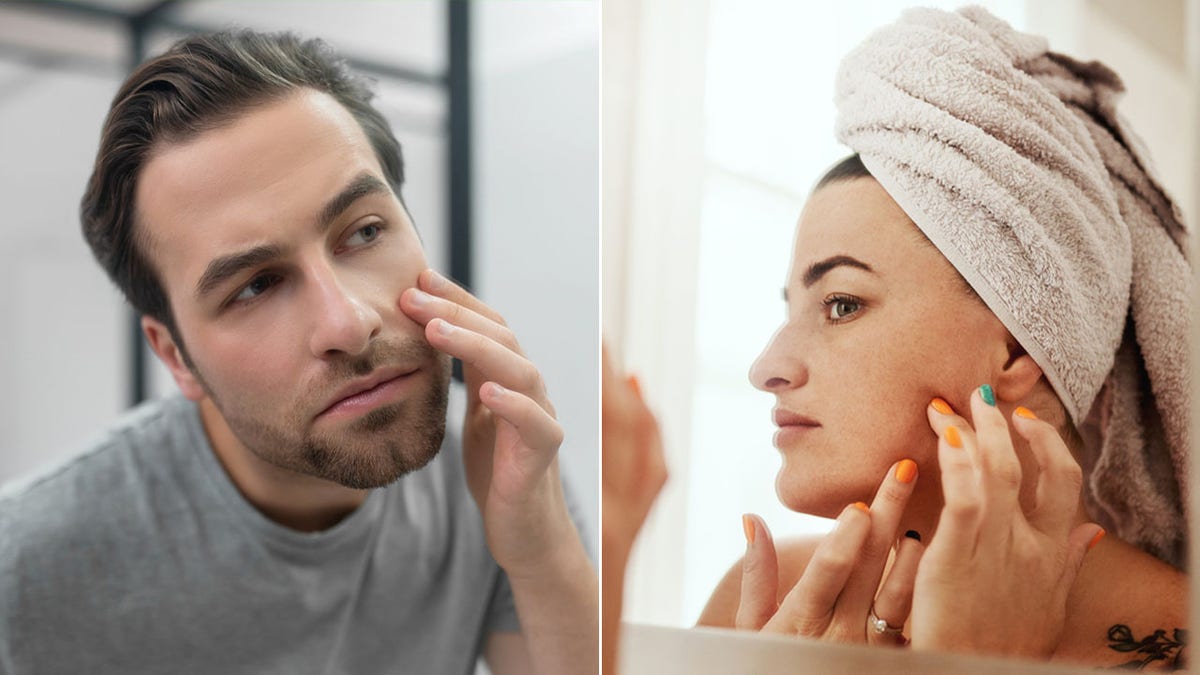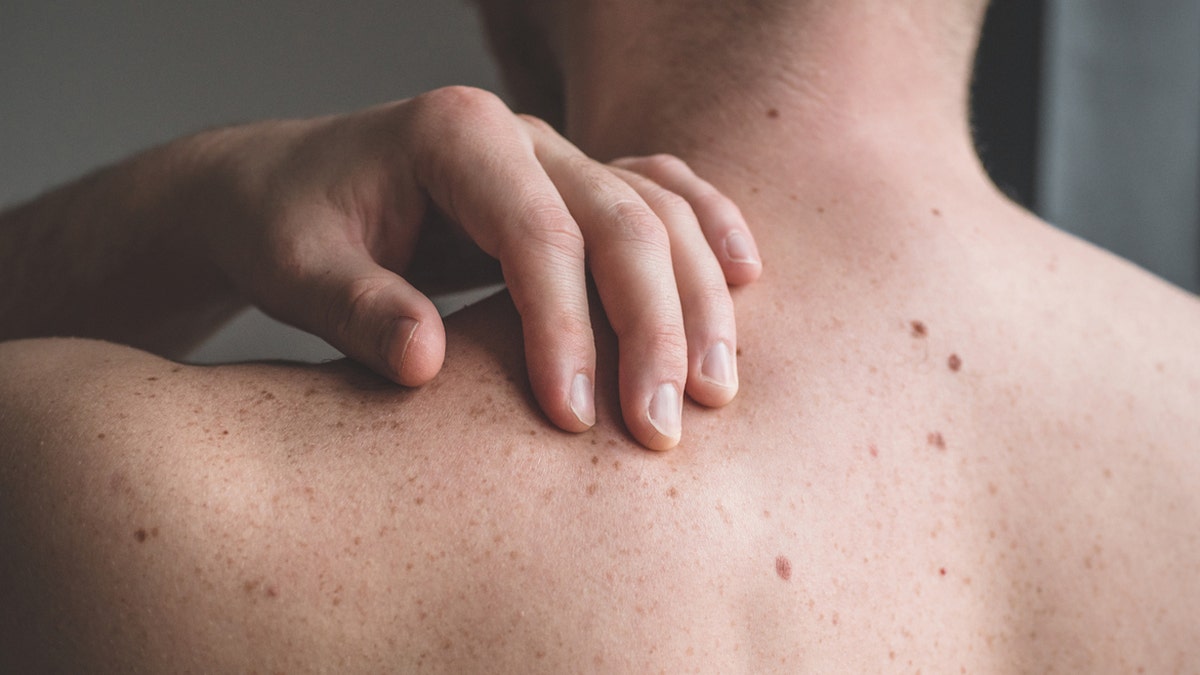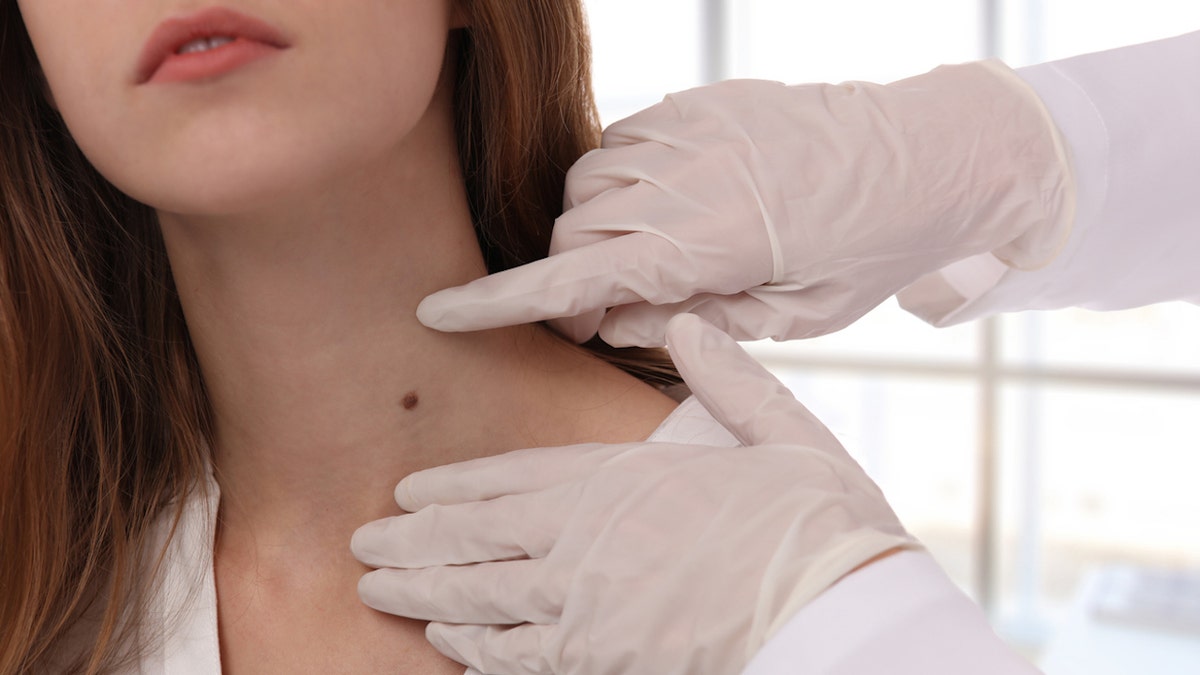AI tool shows promising ability to detect genetic mutations, cancer earlier than humans
Fox News medical contributor Dr. Marc Siegel discusses the rise of artificial intelligence in medicine, including a new tool that accurately detects early markers of brain cancer.
Every day, more than 9,500 people in the U.S. are diagnosed with skin cancer, according to the Skin Cancer Foundation, a New York City-based nonprofit.
Early detection and treatment is the key to a positive outcome, doctors say — and performing regular self-exams is the best way to catch the warning signs.
The Skin Cancer Foundation recommends checking your skin from head to toe at least once a month.
HUGH JACKMAN UNDERGOES BIOPSIES FOR CANCER SCARE, EMPHASIZES SUNSCREEN USE
"A change to a mole, a sore that won’t heal or a new growth may be a warning sign of skin cancer," said Dr. Nandini Kulkarni, medical director of surgical oncology for Inspira Health in Vineland, New Jersey.
"By conducting regular skin checks, you will become familiar with the pattern of moles, blemishes, freckles and other marks on your skin," she said.

Check your skin from head to toe at least once a month, says the Skin Cancer Foundation, a nonprofit. (iStock)
"When you notice a change, you should see your dermatologist."
Specific things to look for and why
Keep an eye out for any new, expanding or changing growths, spots or bumps on the skin, says the American Cancer Society.
"Skin cancer can occur anywhere on the body, even areas that are not exposed to the sun."
Other warning signs include a sore that bleeds and/or doesn’t heal after several weeks, a rough or scaly patch of skin, a wart-like growth, or an irregularly shaped or colored mole.
"The letters A-B-C-D-E can help you remember what to look for," said Dr. Kulkarni.
These include:
A - Asymmetry
B - Borders (irregular, raised)
C - Color (especially change in color of a prior mole)
D - Diameter (larger than a pencil eraser)
E - Evolving changes
Tips for thorough checks
The best time to do a skin self-exam is after a shower or bath, according to Dr. Kulkarni.

Keep an eye out for any new, expanding or changing growths, spots or bumps on the skin, experts recommend. (iStock)
For consistency, do the exam the same way each time.
Choose a well-lit room and use both a full-length mirror and a hand mirror to ensure that nothing gets missed, the doctor said.
SKIN CANCER CHECKS AND SUNSCREEN: WHY THESE (STILL) MATTER VERY MUCH FOR GOOD HEALTH
In addition to the more obvious areas, such as the face, arms, legs and sides, remember to check hidden spots like between the fingers, the soles of the feet and the scalp.
"If needed, ask someone for help when checking your skin," Dr. Kulkarni suggested.
"This can help with hard-to-see areas like your back and scalp."

The experts agree that self-exams should be a supplement to regular checks at the dermatologist — not a replacement. (iStock)
"Skin cancer can occur anywhere on the body, even areas that are not exposed to the sun," said Dr. Kulkarni.
When examining your scalp, she suggests using a comb or blow-dryer to move your hair as you look so you can see more clearly.
Skin checks aren’t a substitute for doctors' exams
The experts agree that self-exams should be a supplement to regular checks at the dermatologist, not a replacement.
CLICK HERE TO SIGN UP FOR OUR HEALTH NEWSLETTER
"Although you might become proficient at noticing changes to moles, freckles and other marks on your skin, differentiating between benign and malignant skin conditions takes years of training and practice," said Dr. Kulkarni.
CLICK HERE TO GET THE FOX NEWS APP
She recommends seeing a dermatologist at least once a year, or more frequently if you have specific concerns about changes to your skin.
To read more pieces in Fox News Digital's "Be Well" series, click here.





















